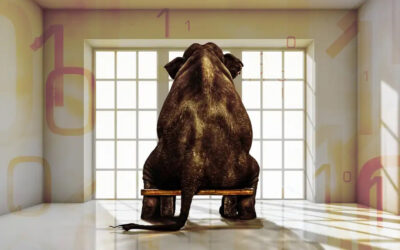Leaders must project confidence. Their teams look to them for vision and stability, especially in volatile times like these. But confidence without a thorough understanding of what’s to come has another name: hubris. You don’t want to have the confidence of the captain of the Titanic, who waited a full 90 minutes after the iceberg struck to inform his crew about what was going on.
We see false confidence all the time in business. It’s seldom caused by a willful lack of awareness, but rather by a suboptimal process for making sense of the future. Fortunately, there are step-by-step, readily executable tools that can improve nearly every organization’s foresight process.
In my career, most recently as Global Futurist at HP, I’ve developed a five-part mechanism to create this awareness of the range of possibility. Because of my book ROGUE WAVES, and a little bit because of who I am, I call it the ROGUE Method.

R – Reality Test
The writer Anaïs Nin once said, “We don’t see things as they are, we see them as we are.” Companies routinely look for data in the mold of the past, tracing the usual set of competitors, customers, threats, and opportunities. It’s nicely structured, but wrong.
In our world of rapid change, these practices lead to incremental strategies. Then, sooner or later, the company’s ship is upended. To see the world as it really is, make a list of what you know and don’t know about the current situation. Then take it a step further, what can’t you know that would change your understanding of the situation if you did. If a number of answers are possible, what is the likelihood of each? The more systematically you go about answering these questions, the more likely you are to catch what others around you have missed.
O – Observe Your System
What private company do you think recruits more PhD economists in the United States than anyone else? Goldman Sachs? Bank of America? It’s Amazon.
Amazon isn’t using this talent to buy stocks and bonds, but to model potential futures and complex systems. Amazon knows that it can’t predict the future, but it can determine systemic forces and probabilities of certain events colliding with them.
Much like a long-range weather forecast, Amazon is assessing the likely range of happenings based both on what it knows, as well as events it can only hypothesize. Most businesses are not as vast and complex as Amazon, or the weather, and you don’t need a PhD to figure these things out. Again, developing a rigorous understanding of the system you work in will help you identify the points where you have the most leverage.
G – Generate Possible Futures
We don’t know the future, but we can envision what the range of possible futures might be. Reality Testing gives you a clear view of the current situation. Observing Your System provides a sense of the key changes that could impact your business. You can then look ahead to determine a wide range of potential outcomes. Ask yourself what is the impact, likelihood, and timing of each. Outcomes are usually quite unequal and can differ from one organization to another. The point isn’t just the breadth of possibility. It’s how change will impact you. Executives at AMC Theaters and Zoom walked into 2020 with what they thought were good strategies, but their experience was radically different.
Scenarios can lead to highly positive change for your organization as well as major disruption, but you need to focus first on changes in the external world. If you don’t understand this, your strategy will be built on your own reality instead of reality.
U – Uncouple Your Threats From Your Opportunities
You can’t plan for everything. To set priorities, think through which parts of the systems you’ve laid out are most susceptible to change. What could trigger those changes? What can you influence that would have a major impact on how your futures play out?
This doesn’t have to be rocket science. Look at the phenomenal success of McDonald’s starting in the 1950s. CEO Ray Kroc understood that suburbanization was a major force changing how people lived, how they got around, and what they expected. Kroc aligned his model with those forces, for instance through building his stores around the automobile, standardization, and fast in-and-out service. Like it or not, McDonald’s stores also made that lifestyle increasingly feasible. Kroc wasn’t some starry-eyed visionary, but he certainly had a vision.
E – Experiment
Now you need to get into what I call Possibility Testing. How many projects do you have that are at risk due to future forces? What opportunities are you unprepared for? What threats are you unable to mitigate? What experiments could help you capture growth options while increasing resilience?
This doesn’t mean you need to bet the bank. Many highly successful companies are thrifty with their experiments, but they design them carefully and choose them judiciously. They also think of them as a portfolio, instead of independent investments.
Consider whether you have the right combination of experiments for your organization:
- Growth experiments with high reward and potentially high risk
- Sustaining experiments that protect existing interests usually with smaller bets
- Insurance experiments that limit downsides of undesirable events.
Your future is a choice. You can hope that it will mirror the past or you can expect disruption. If you choose the latter, the ROGUE Method will give you a far clearer view of what is possible, how to increase resilience and grow with the wave of change.
If you believe that the world is becoming more volatile, plan for disruption. You’ll do better than those who assume stasis.



